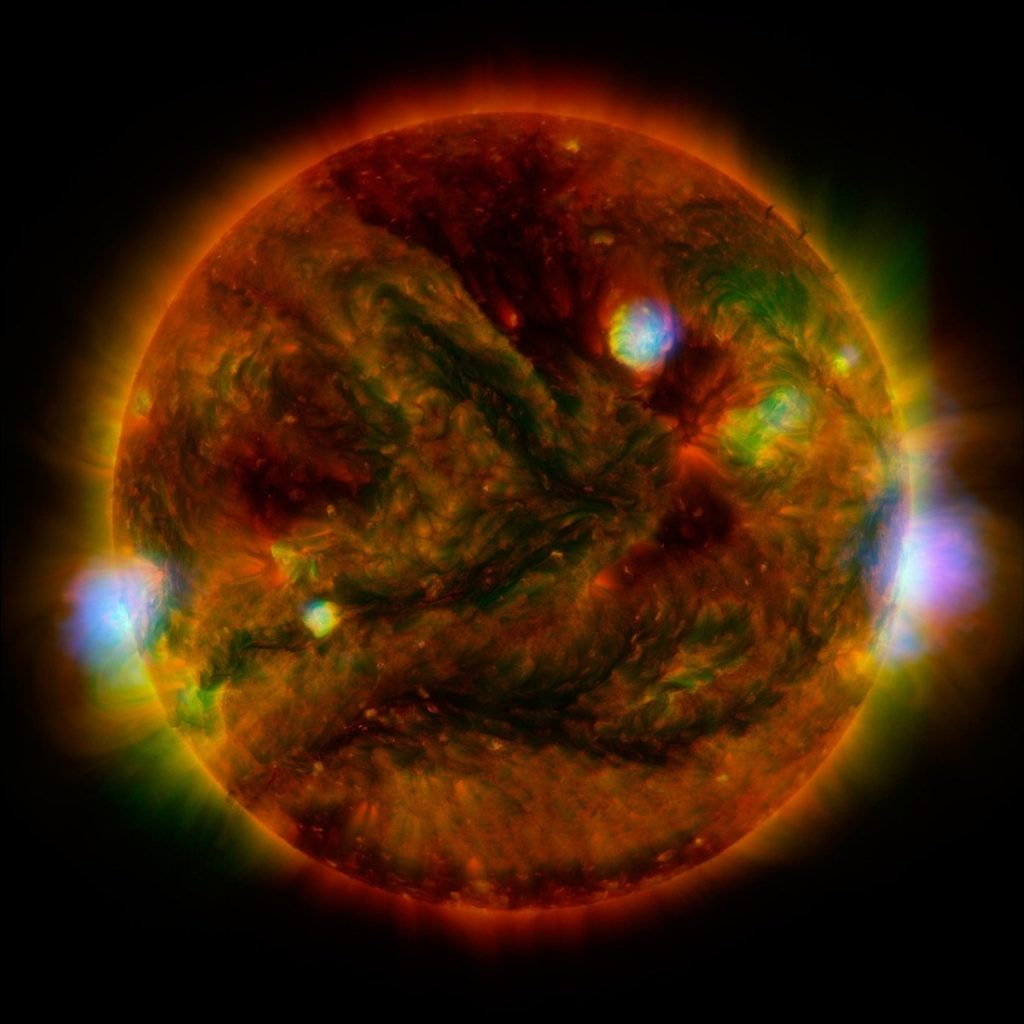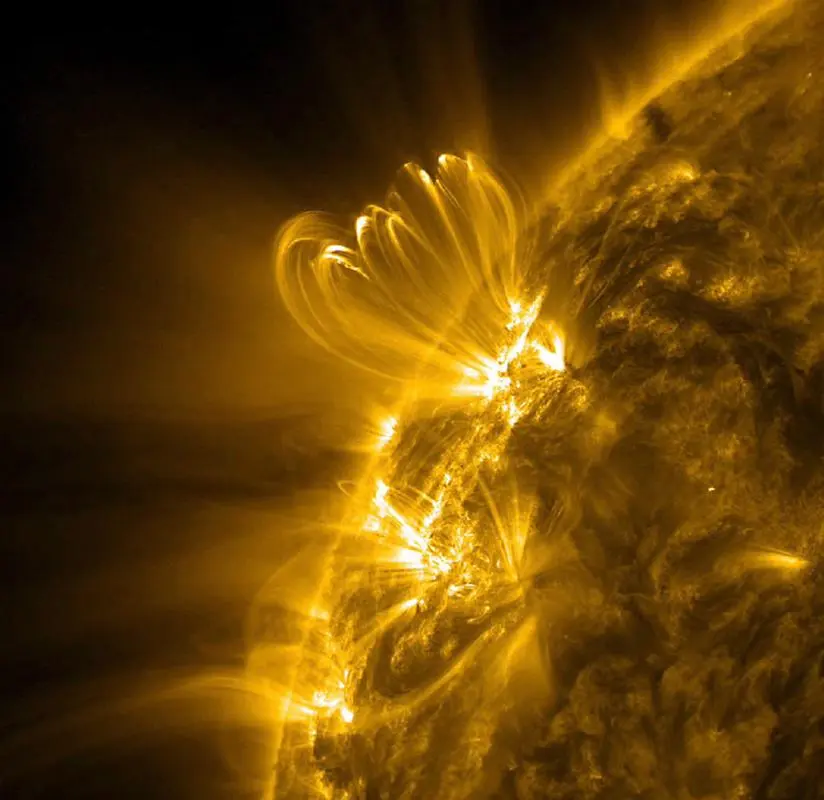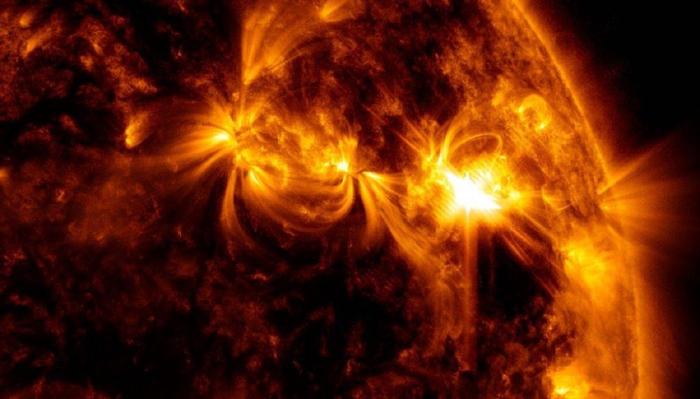The recent occurrence of a massive solar flare, as captured by a NASA telescope, has raised significant concerns about its potential impact on Earth’s communication systems.
The solar flare, which was accompanied by a substantial radio burst, caused a temporary disruption in radio communication on our planet, particularly in parts of the United States and other sunlit regions across the globe.
This event, described by scientists at the National Oceanic and Atmospheric Administration (NOAA) as the most significant solar flare since 2017, has prompted a closer examination of the potential consequences of such solar activities on our technological infrastructure.
The solar flare, a sudden and intense eruption of energy on the sun’s surface, has long been a subject of fascination and concern for scientists and researchers.
While solar flares are a natural occurrence and are not uncommon, the recent event has raised alarms due to its size and impact.
The accompanying radio burst, which extended to higher frequencies and caused interference for a period of two hours, is particularly noteworthy.
According to Shawn Dahl of NOAA’s Space Weather Prediction Center, the combination of the solar flare and radio burst resulted in one of the largest solar radio events ever recorded, underscoring the magnitude of the event.
The disruption in radio communication caused by the solar flare and radio burst highlights the vulnerability of our technological infrastructure to space weather events.
Radio communication is a critical component of modern society, supporting a wide range of essential services including emergency response, air traffic control, and telecommunications.
The temporary interference experienced as a result of the solar activity serves as a stark reminder of the potential impact of space weather on our daily lives.
In light of this event, it is imperative for scientists and policymakers to continue to study and monitor solar activity in order to better understand its potential impact on Earth.
Efforts to develop advanced warning systems and mitigation strategies for space weather events are crucial to safeguarding our technological infrastructure and ensuring the resilience of our communication systems.
Furthermore, collaboration between space agencies, research institutions, and governmental bodies is essential to address the challenges posed by solar flares and other space weather phenomena.
As we continue to explore and harness the potential of space for scientific discovery and technological advancement, it is essential to remain vigilant and prepared for the potential impact of solar activity on our planet.

The recent solar flare serves as a reminder of the dynamic and interconnected nature of our solar system, and the need for continued research and vigilance in the face of space weather events.
By working together to understand and address the challenges posed by solar flares, we can better protect our communication systems and ensure the resilience of our technological infrastructure in the face of space weather.
Recent reports have indicated that multiple pilots have experienced communication disruptions across the country, according to the space weather forecasting center.
This has raised concerns among scientists who are now monitoring a sunspot region and analyzing the possibility of a coronal mass ejection, which could be directed at Earth.
This could result in a geomagnetic storm that could disrupt high-frequency radio signals at higher latitudes and trigger northern lights, or auroras, in the coming days.
The potential impact of a geomagnetic storm is significant, and it is important to understand the science behind this phenomenon.
A geomagnetic storm is a disturbance in the Earth’s magnetic field caused by a coronal mass ejection from the sun.
This ejection is a massive burst of plasma and magnetic fields that can travel through space and reach Earth within hours or days.
When a coronal mass ejection reaches Earth, it interacts with the planet’s magnetic field, causing it to fluctuate and creating a geomagnetic storm.
This can cause a range of effects, from minor disruptions to power grids and satellite communications to more significant impacts on high-frequency radio signals and navigation systems.
The potential impact of a geomagnetic storm on high-frequency radio signals is of particular concern. High-frequency radio signals are used for communication between pilots and air traffic controllers, as well as for navigation systems and other critical applications.
A disruption in these signals could lead to serious safety concerns and operational disruptions.
In addition to the potential impact on high-frequency radio signals, a geomagnetic storm can also trigger northern lights, or auroras, in the coming days.
These beautiful natural phenomena are caused by charged particles from the sun interacting with the Earth’s magnetic field. While they are a stunning sight, they can also have an impact on power grids and other electrical systems.

Given the potential impact of a geomagnetic storm, it is critical that scientists continue to monitor this sunspot region and analyze the possibility of a coronal mass ejection.
This will allow for early warning and preparation for any potential disruptions to high-frequency radio signals and other critical systems.
In conclusion, the recent reports of communication disruptions among pilots are a cause for concern, and highlight the potential impact of a geomagnetic storm.
It is important to understand the science behind this phenomenon and to continue to monitor the sunspot region for any signs of a coronal mass ejection.
By doing so, we can prepare for any potential disruptions and ensure the safety and reliability of critical systems.
It is indeed fascinating to learn about the eruption in the far northwest section of the sun and how NASA’s Solar Dynamics Observatory was able to capture the powerful surge of energy in extreme ultraviolet light.
The fact that the spacecraft is in an extremely high orbit around Earth, constantly monitoring the sun, is truly remarkable and demonstrates the advancements in technology that allow us to study and understand solar activity.
It is also interesting to note that the sun is nearing the peak of its 11-year solar cycle, and that maximum sunspot activity is predicted for 2025.
This information provides valuable insight into the cyclical nature of the sun’s activity and the potential impact it may have on Earth.
Overall, the study of solar flares and sunspot activity is crucial for understanding the behavior of our sun and its potential effects on our planet.
It is important to continue monitoring and studying these phenomena in order to better prepare for any disruptions they may cause, such as the temporary disruption of radio signals on Earth that occurred as a result of the recent solar flare.

In conclusion, the information provided about the recent solar flare and the ongoing monitoring of the sun’s activity is both fascinating and important for our understanding of solar phenomena.
I look forward to learning more about the advancements in this field and the potential impact of future solar activity on Earth. Thank you for sharing this insightful information.
